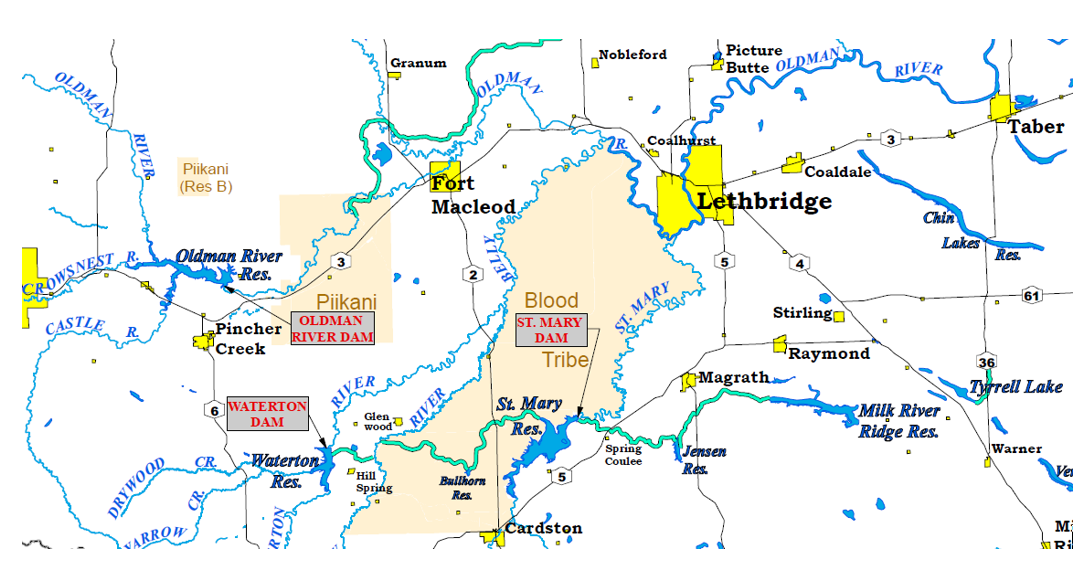The City of Lethbridge provides water services to municipalities in the surrounding region. This includes a lot of farmlands. And as the summer heat takes hold across southern Alberta, farmers keep a close eye on their crops. A wet start to the growing season helped offset lower irrigation allocations. But with hot, dry days in the forecast, irrigation demand is rising. In this week’s Water Wednesday, we explore water conservation’s role in crop management.
Let’s explore how water transports from irrigation districts to fields. The last few decades have seen significant advancements in this process. The most significant being a shift from open canals to pipelines.
“This limits leaching* and evaporation,” says Willemijn Appels, Senior Research Chair at Lethbridge College. “It also allows for better management, so they don’t spill as much at the end of the district. More and more, they are only taking the water out that is being delivered to the farm gate.”
(*Leaching: when water seeps into the canal bed and can’t be delivered to the farm or when too much irrigation causes water to drain into deeper soil layers where it can no longer be reached by crop roots.)
While some water is still lost along the way, Appels says the amount is much smaller compared to the 1970s and 1980s.
There have also been several upgrades in irrigation practices. Gone are the days when most farmers used wheelmove irrigation. Appels says more than 85 per cent of fields in the southern Alberta irrigation districts are now watered using low pressure centre pivots.
“Lower pressure sprinklers, and sprinklers closer to the ground, result in far less evaporation than sprinklers that toss water high up in the air,” says Appels.
Centre pivots also allow for more precise water application. Relocating a wheelmove system involved a lot of time and effort. Water was often applied to one piece of land, soaking it for several hours. Centre pivots are self-propelled and apply less water. This allows them to meet a crop’s water demand as it develops over time.
Drip and variable rate irrigation also increase water efficiency in agriculture.
Modern-day drip irrigation was developed in Israel in the 1960s. It places water straight onto, or even under, the soil surface. It is a popular option for vineyards, orchards and in vegetable production. It is not nearly as common on field crops.
“At the moment, less than one per cent of farmers in southern Alberta use that technology,” says Appels. “Implementing that on a very large scale, and figuring out how people could manage it cost-effectively, would be a game-changer.”
More recently, variable rate irrigation was first developed in the United States in the early 2000’s. Farmers can set pivots for different rates of water as the system moves around. If water pools in certain spots after rain, they can avoid irrigating that area and focus on areas that have less water in the root zone.
One challenge involved in all irrigation is mapping out soil moisture. Traditionally, farmers use an auger to grab a bit of soil and squeeze it. While soil moisture sensors have modernized that process, Appels notes there are limitations.
“If you have a quarter-section, then moisture might vary quite a bit more than your sensor’s one location. The challenge is mapping out where the moisture is and where your plants may have different needs.”
Adopting new technologies or processes takes time and effort. And in farming, time is a precious commodity. Research involving Lethbridge College and southern Alberta stakeholders looks to continue improving agricultural water management.
“We have a number of ongoing projects,” notes Appels. “They involve new and existing sensors, irrigation technology and models to improve the timing and precision of irrigation scheduling.”
To learn more about the City’s water conservation efforts, visit www.lethbridge.ca/waterconservation.


